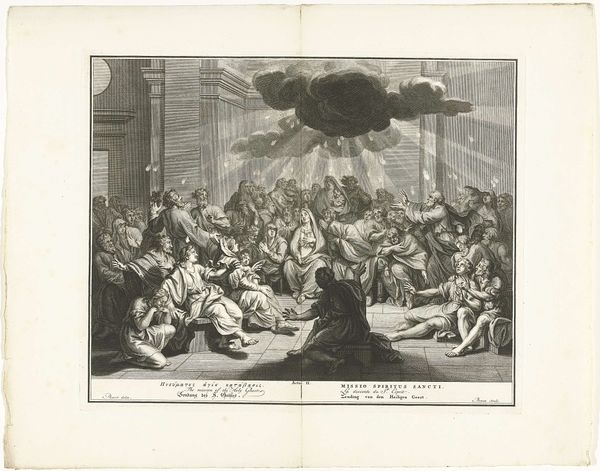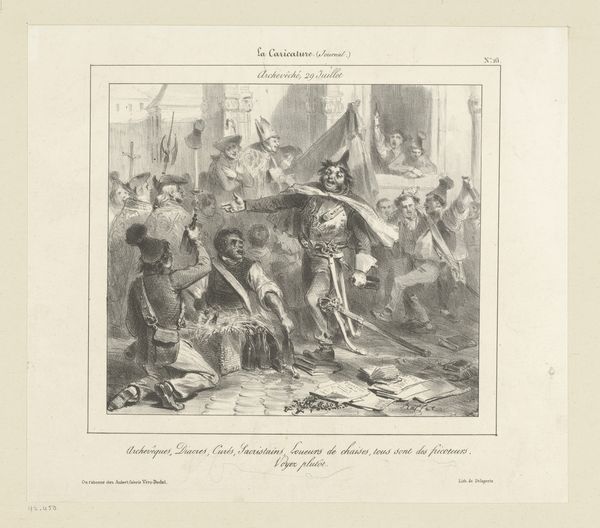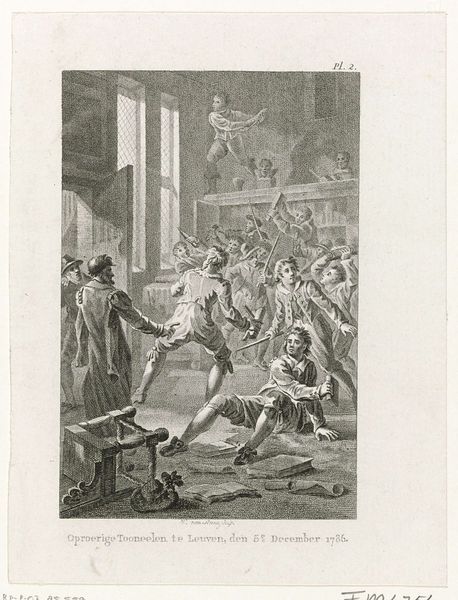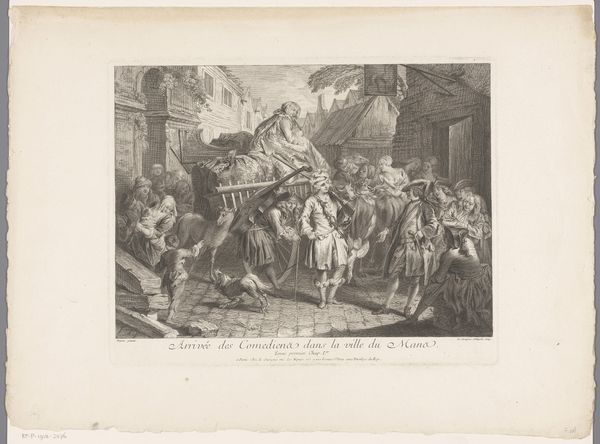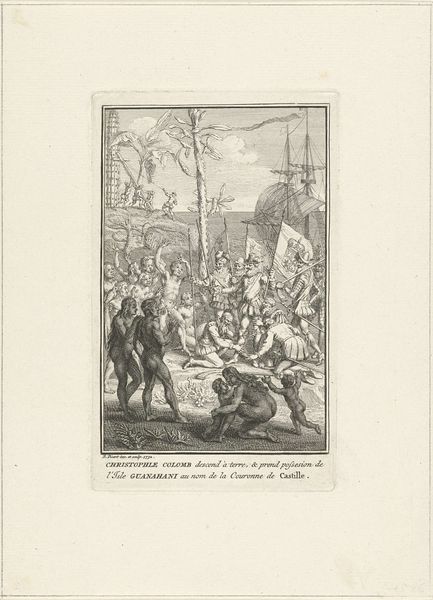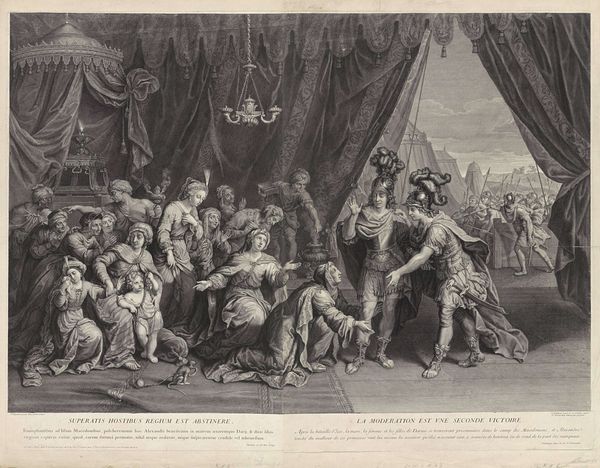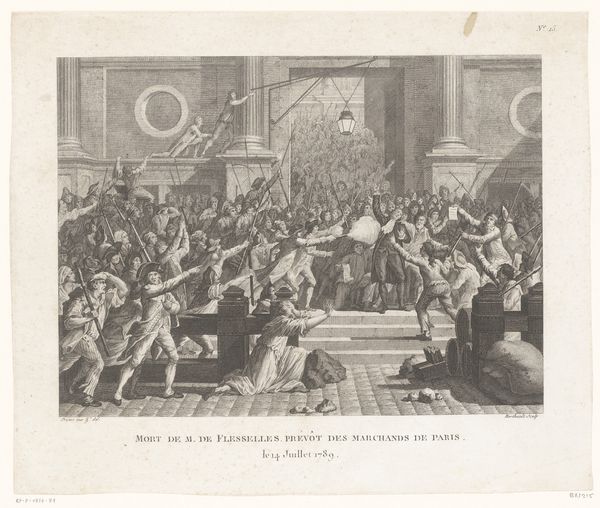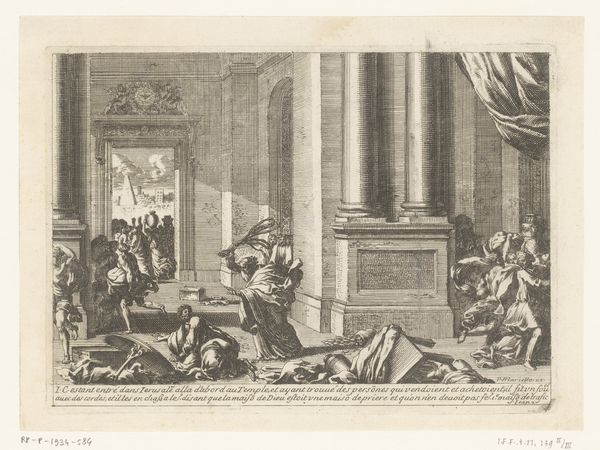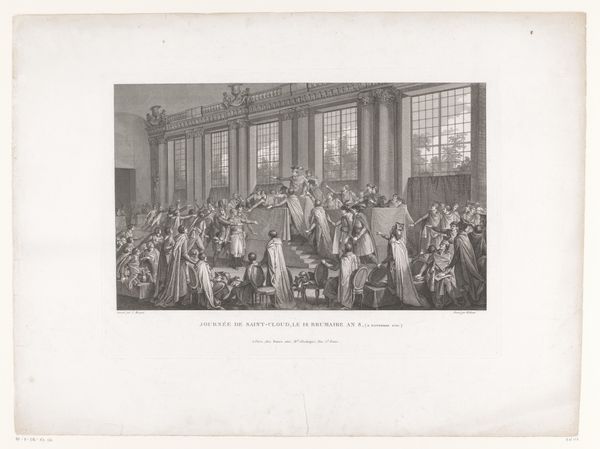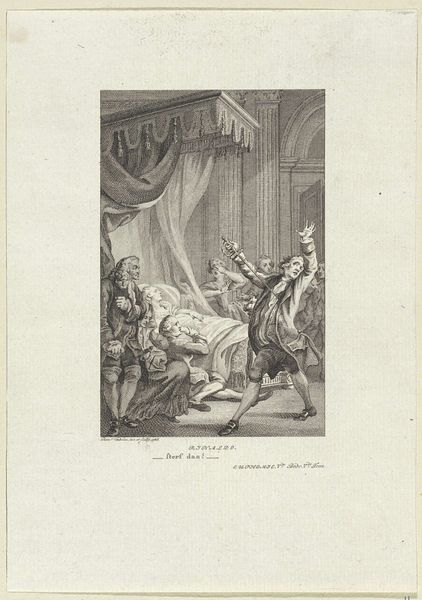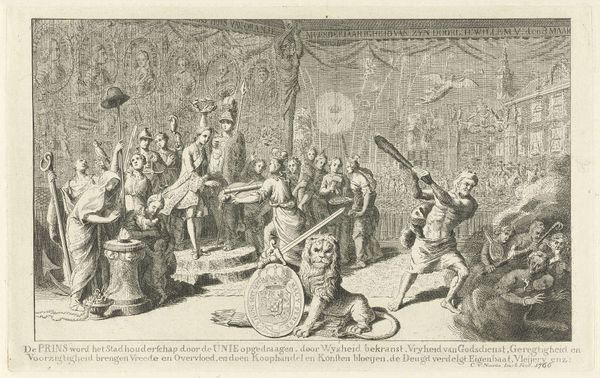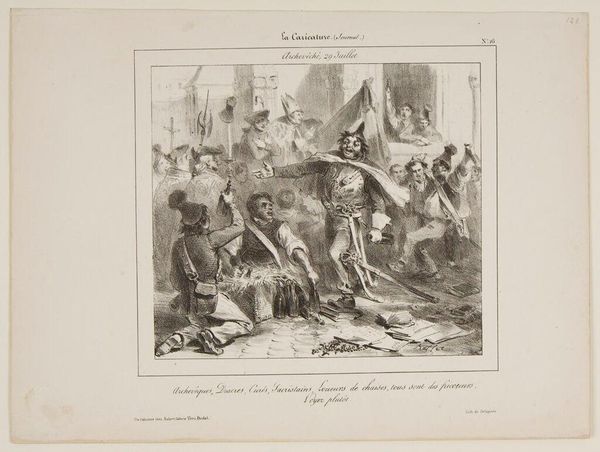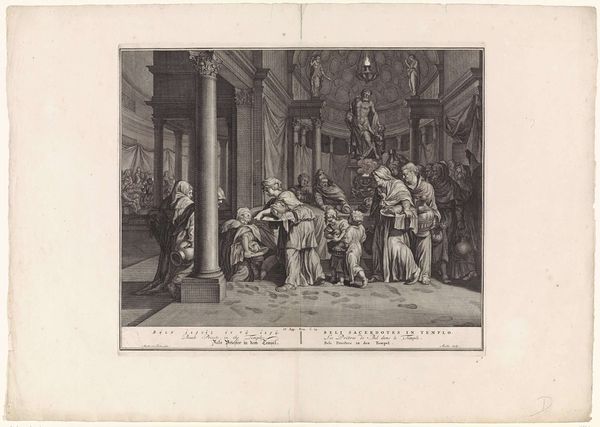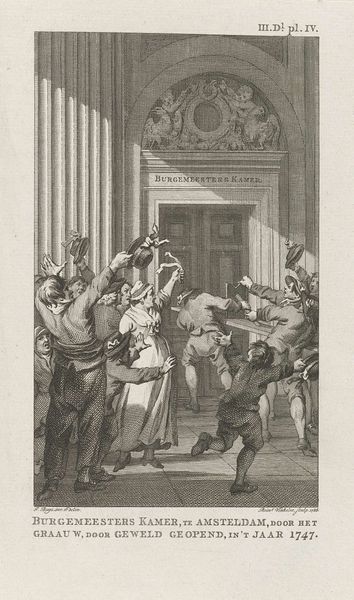
print, engraving
#
aged paper
#
narrative-art
#
baroque
#
ink paper printed
# print
#
old engraving style
#
figuration
#
personal sketchbook
#
history-painting
#
engraving
Dimensions: height 363 mm, width 445 mm
Copyright: Rijks Museum: Open Domain
Jacob Folkema created this etching of the Wedding at Cana sometime in the 18th century. Etching is an intaglio printmaking technique, using metal, usually copper, and relies on the corrosive action of acid to create the image. First, Folkema would have prepared a metal plate with a waxy, acid-resistant ground. He then scratched into this ground with a pointed tool, exposing the metal. The plate was then immersed in acid, which bit into the exposed lines, creating grooves. The longer the plate stayed in the acid, the deeper and darker the lines would be. After removing the ground, Folkema would have inked the plate, wiping the surface clean so that ink remained only in the etched grooves. Finally, he pressed the plate against a sheet of paper using a printing press. This print exemplifies how the skilled application of craft and artistic techniques can convey the emotional and visual richness of an artwork, challenging the notion of a rigid hierarchy between the fine and decorative arts.
Comments
No comments
Be the first to comment and join the conversation on the ultimate creative platform.
